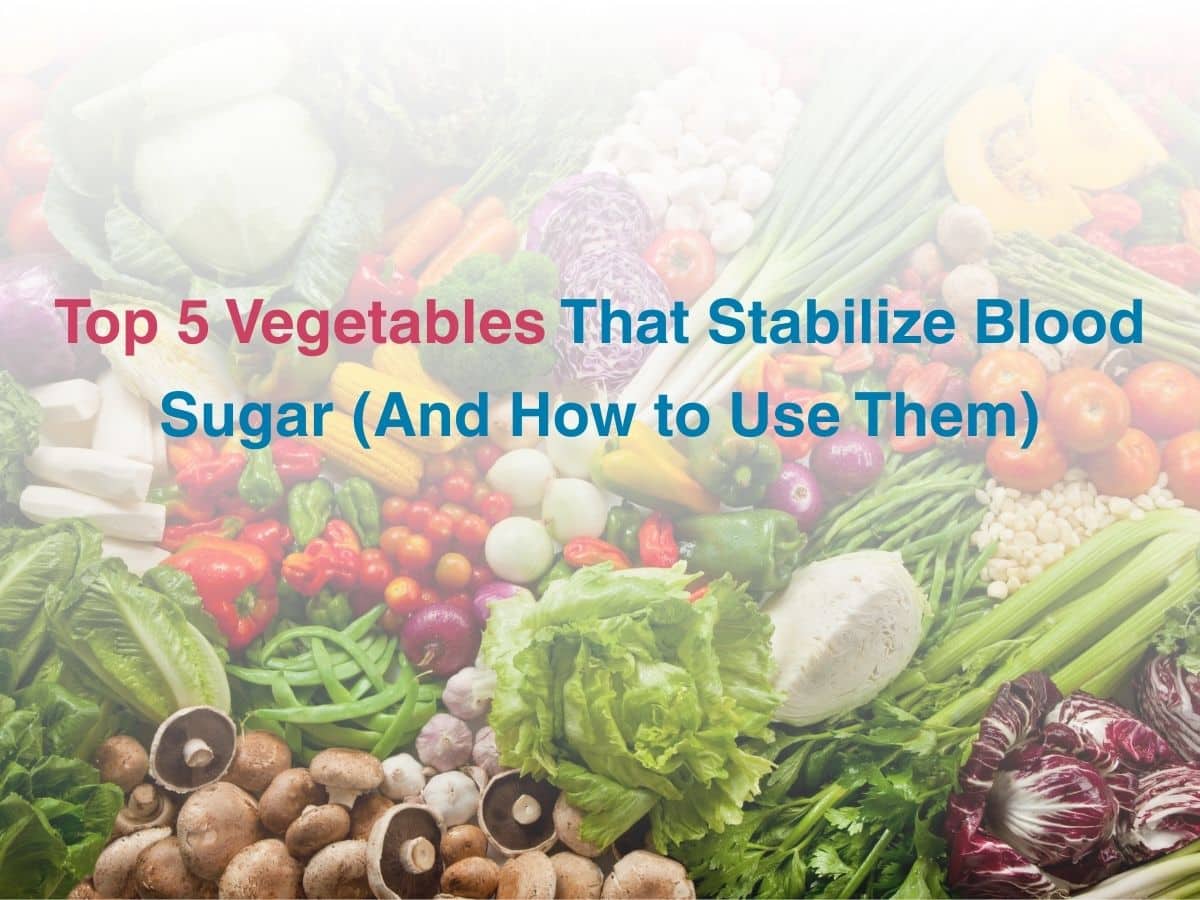
Top 5 Vegetables That Stabilize Blood Sugar (And How to Use Them)

Blood sugar is the most important component in the body that is required to perform various metabolic activities. But, anything in excess is a disease; diabetes occurs due to excessive uncontrolled blood sugar in the body. It is a lifestyle disorder that can be kept under control with proper medications, healthy diet and food habits. This is where a plant product rich diet is super helpful. By consuming different veggies in required quantities with a combination of protein and healthy carbs, it is possible to have a complete and balanced meal without any restrictions.
5 Common Vegetables Effective In Controlling Of Blood Sugar
These vegetables are commonly available in most parts of the world offering healthy vegetable options to diabetic individuals.
- Bitter gourd: They help in stabilizing blood sugars by providing compounds like charantin and polypeptide-p that act like insulin and improve insulin sensitivity. Studies have suggested that it reduces A1c levels and also enhances glucose metabolism. It can be added to your diet as juice, stir-fries, and curries or can be eaten with a dal-based stuffing, for added flavour, texture and protein.
- Okra or lady’s finger: Okra is one of the best low glycaemic index foods available. Its high fibre content not only helps in controlling blood sugar levels for diabetic individuals, but also aids in digestion by lowering unhealthy cholesterol levels and triglycerides. Since fibre takes longer to digest, you feel full for longer. Some research has shown that okra or bhindi is rich in antioxidants and is great for reducing cellular stress. Consume them as stir fries, curries and by steaming with the seeds intact for the best results.
- Cauliflower: This diabetic friendly vegetable is low in carbohydrate content with glycaemic index of only 10 and is rich in fibre and powerful antioxidants like polyphenols and flavonoids which help in protecting cells from damage. Compounds like sulforaphane in cauliflower helps the body to use insulin better and reduce inflammations. It assists in lowering bad cholesterol and reduces the risk of heart diseases. Eating them as a replacement- like cauliflower mash instead of rice, incorporating them in salads, as a steamed side dish or curried preparations are favourable.
- Spinach: It is a commonly found and consumed green leafy vegetable rich in multiple vitamins, antioxidants, dietary fibres and low on carbs. It’s rich in soluble fibres, which slows down the process of digestion- keeping the person full for a longer time and not causing an immediate spike in blood sugar levels. Not only is it rich in fibre, it is also one of the richest sources of magnesium, iron and vitamin A- nutrients that are crucial in major metabolic activities in our body. Due to its soluble fibres it can be consumed raw, in salads, soups or even juices after steaming and blending them.
- Kohlrabi or knol-khol: A cruciferous vegetable that looks like turnip and tastes like cabbage is a rich source of vitamin C, vit. B6, fibre, folates and minerals like magnesium and manganese. The fibre content present in kohl rabi is water soluble that helps in reducing blood glucose and cholesterol levels. It also helps in blocking insulin resistance linked to diabetes and obesity. Due to its cabbage-like taste it can be consumed raw in salads, can be used in lentil soups or stir fry curries. Even the leaves are beneficial and can be used in mashed dishes and sauces.
Conclusion
Lifestyle diseases like diabetes can be reversed and maintained with healthy habits of eating and maintaining daily activities. Vegetarian and vegan options are more reliable and effective in controlling blood sugar levels as they are rich in fibre.They are also rich in antioxidants that help in healing inflammation in the body and cell death. They help in reducing bad cholesterol which in turn helps in reversing obesity – reducing the risk factors for diabetes and heart diseases. So, switching to a veggie rich diet is the best choice you can make in the long term, if you are diabetic or pre-diabetic.






